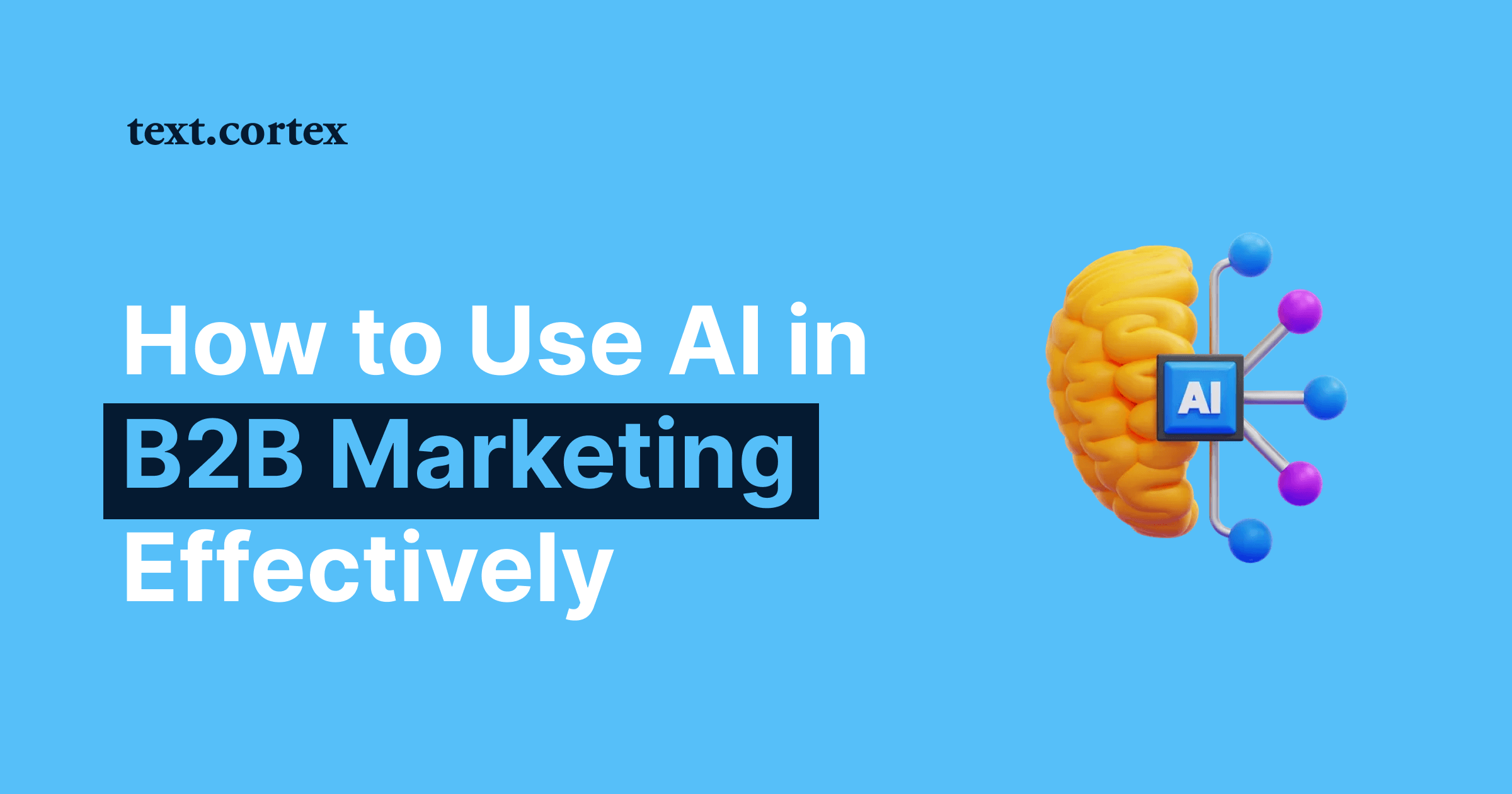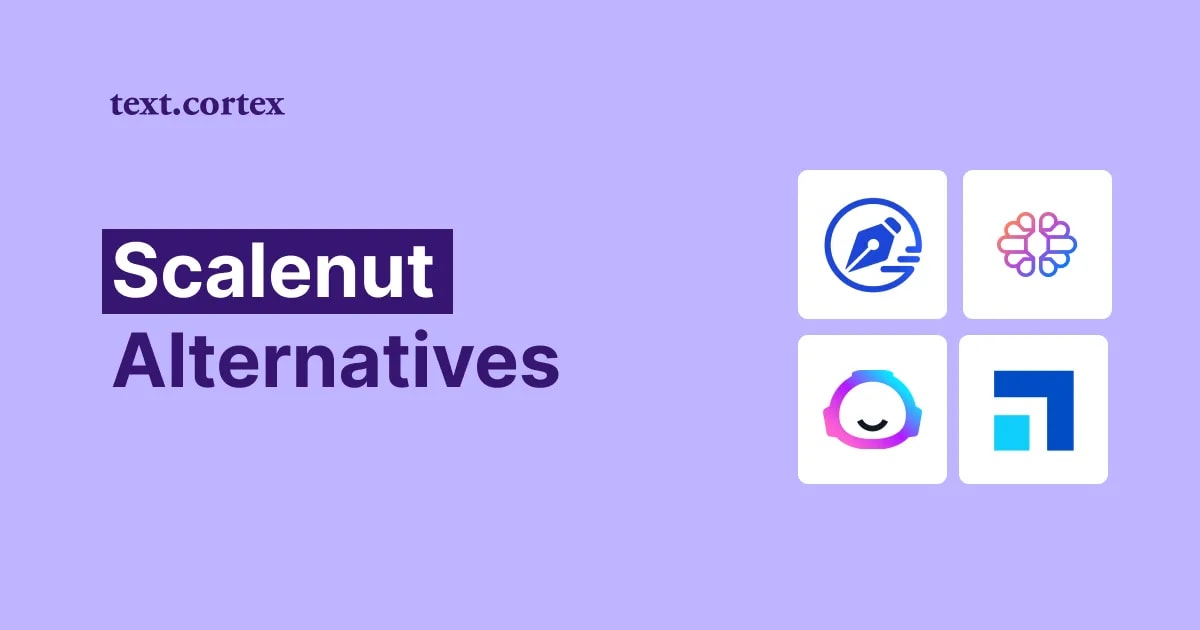Whenever a new technology emerges, it’s hard to immediately understand what lies behind it and how we can benefit from it.
In addition, things get even more puzzling when the two seemingly same expressions, like "chatbots" and "conversational AI" pop up.
However, the distinction between chatbots and conversational AI is more than mere semantics - it reflects the evolution from rule-based responses to context-aware conversational agents.
These interfaces have reshaped how we engage with digital platforms and services, so knowing what each brings is crucial.
If this feels like uncharted territory, no worries - we’ll explore chatbots vs. conversational AI to dissect their functionalities and applications.
Let’s dive in!
What are Chatbots?
Chatbots are computer programs that simulate conversations with human users.
You can integrate them into various platforms, such as websites, messaging apps, or voice-enabled devices, to:
- provide users with information,
- answer questions, or
- assist with specific tasks.
The primary type of chatbot is a Rule-Based Chatbot.
Rule-Based Chatbots
These chatbots operate on predefined rules and follow a set of instructions to respond to user inputs.
Since responses operate on a predetermined set of rules and patterns, they are more limited in handling complex or unpredictable conversations.
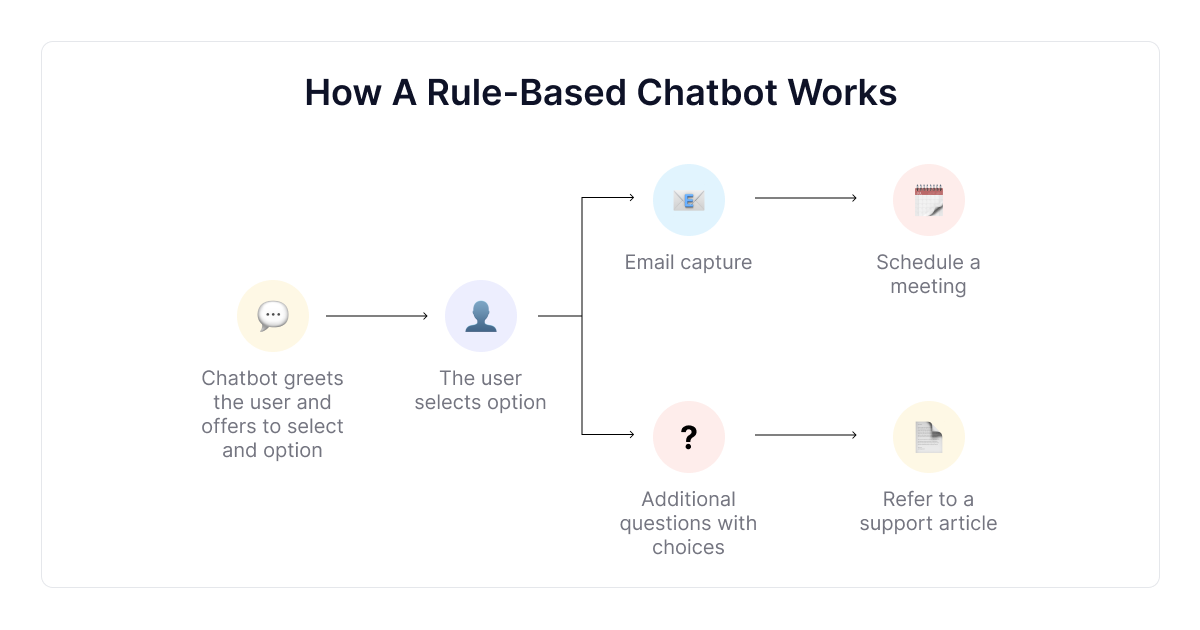
Therefore, rule-based chatbots are suitable for scenarios where interactions are relatively straightforward and anticipated, for example, customer support, eCommerce, etc.
What is Conversational AI?
These chatbots use artificial intelligence (AI) and machine learning technologies, particularly natural language processing (NLP), to understand and respond to user input.
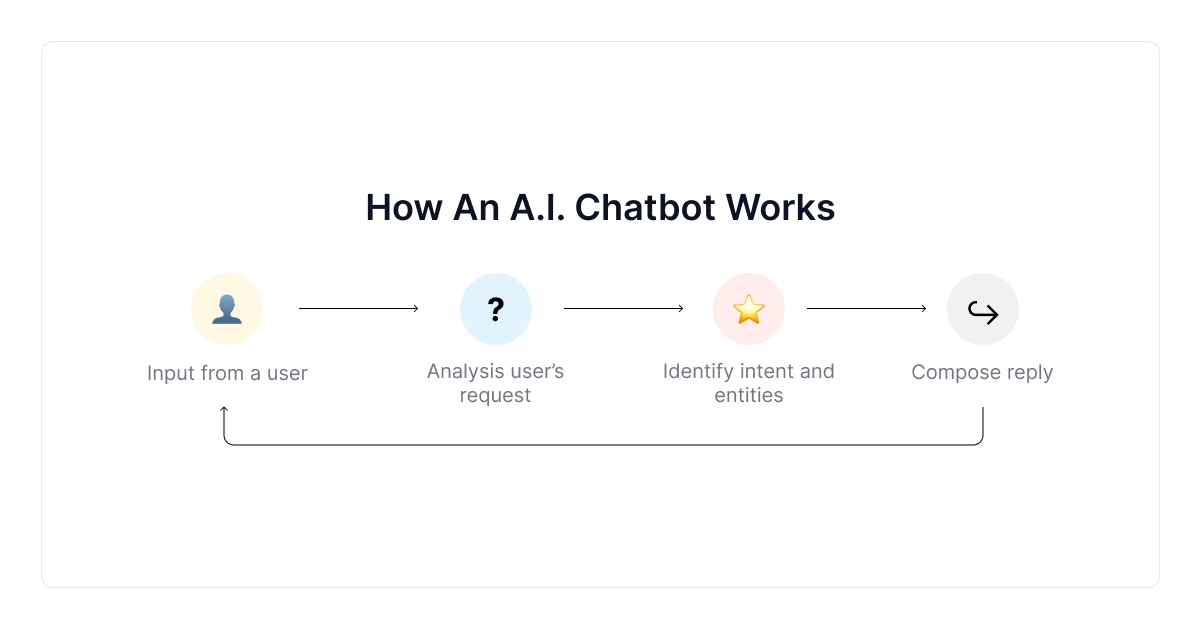
Key features and components of Conversational AI include:
1. Natural Language Processing (NLP)
Conversational AI systems use NLP to understand and interpret human language, including context, semantics, and sentiment.
This allows the system to comprehend user inputs in a way that goes beyond simple keyword matching.
2. Machine Learning (ML)
ML algorithms enable Conversational AI systems to learn and improve over time. They can adapt to user preferences, understand context, and refine their responses based on past interactions.
3. Context Awareness
Conversational AI systems strive to maintain context during a conversation, understanding the flow of dialogue and referencing previous interactions to provide more coherent and personalized responses.
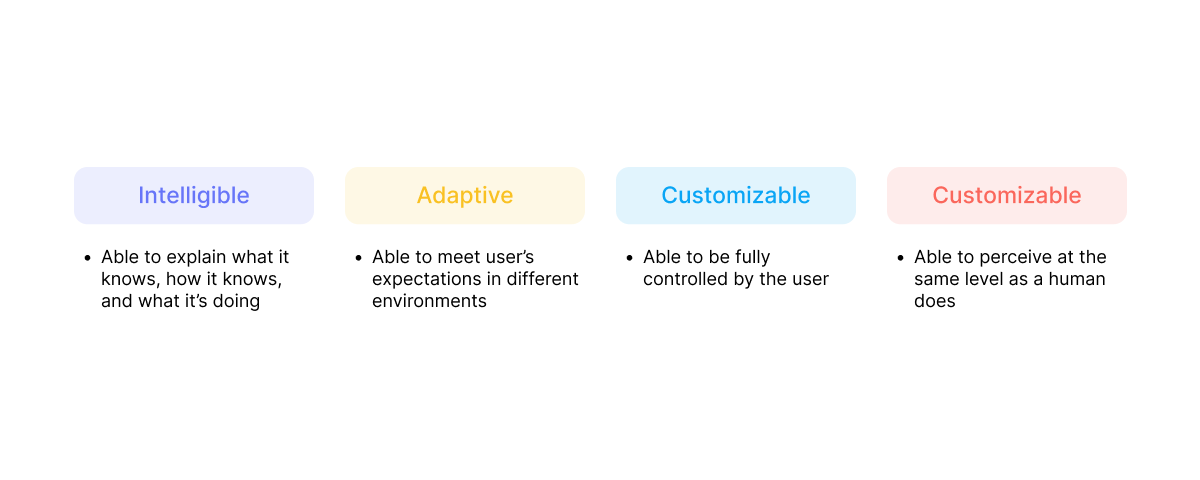
4. Intent Recognition
The AI systems identify the intent behind user queries, allowing them to respond appropriately and carry out specific actions or provide relevant information.
5. Multimodal Interaction
Some Conversational AI systems go beyond text-based interactions and support various modes of communication, including voice, images, and even video.
6. Personalization
Conversational AI can offer personalized experiences by remembering user preferences and history and adapting responses based on individual user profiles.
Therefore, AI-powered chatbots can learn from interactions, adapt to user preferences, and handle more dynamic and context-aware conversations.
As such, they can understand the intent behind user queries, allowing for a more natural and flexible interaction.
Chatbots vs. Conversational AI: What’s The Difference?
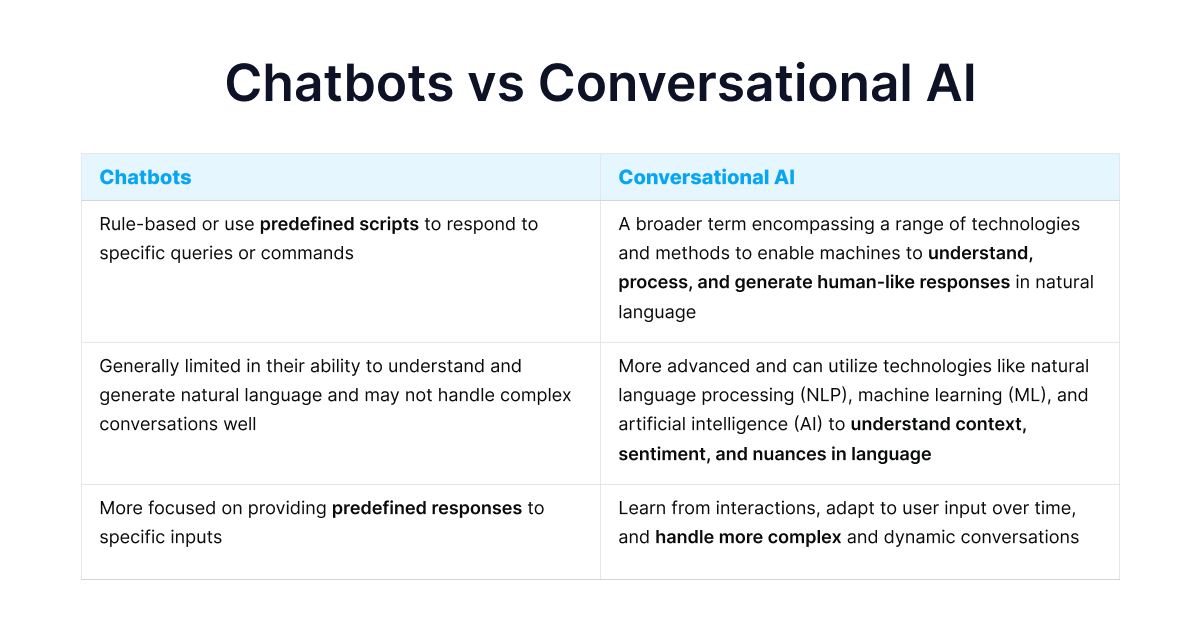
💡 In summary, all chatbots are a form of conversational interface, but not all conversational interfaces are traditional chatbots.
Both chatbots and conversational AI are powerful tools to increase work efficiency, so let’s see in which areas they shine the most.
Chatbots vs. Conversational AI: The Most Common Use Cases
Chatbots: The Most Common Use Cases
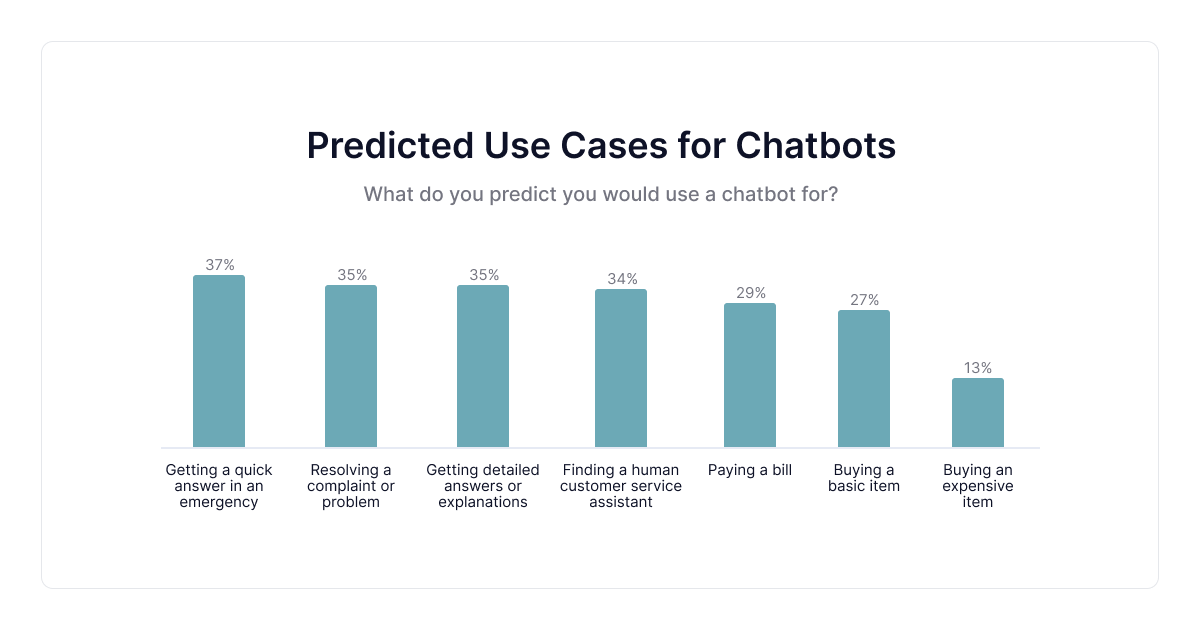
Customer service is definitely the area where chatbots have found widespread use due to their ability to provide instant responses, automate routine tasks, etc.
Below, you’ll find the most common use cases in customer service
1. FAQs and Information Retrieval
Chatbots retrieve relevant information from knowledge bases or databases by analyzing and understanding the user's query.
2. Order Tracking and Status Updates
You can integrate chatbots with backend systems to fetch real-time information on order status, delivery updates, or any other relevant details.
3. Appointment Scheduling and Reservations
Chatbots can facilitate appointment scheduling and reservations by interacting with users to find suitable time slots, check availability, and confirm bookings.
4. Troubleshooting and Technical Support
You can use chatbots to provide step-by-step instructions, identify potential problems, and offer solutions.
Furthermore, in cases where issues are more complex, chatbots can forward the problem to human support agents.
5. Feedback Collection and Surveys
Chatbots can also collect customer feedback and conduct surveys to gather valuable insights.
Thus, they can ask customers about their experiences, preferences, and opinions, helping you to understand customer satisfaction levels and areas for improvement.
Conversational AI: The Most Common Use Cases
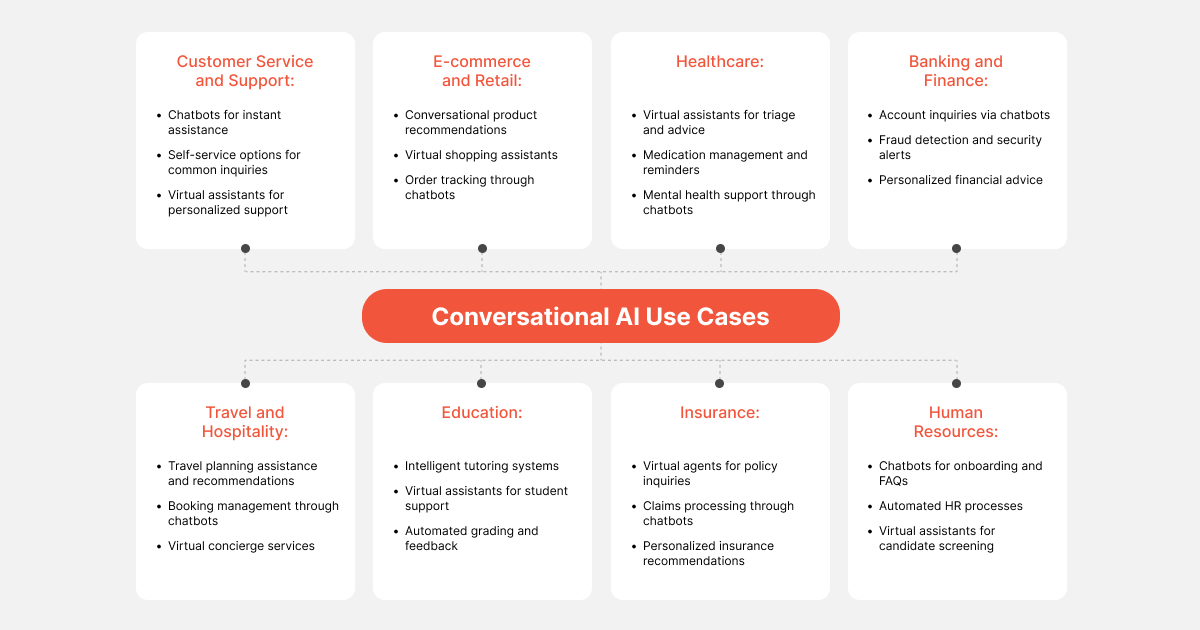
Being able to perform more complex and advanced tasks gives conversational AI an advantage compared to traditional chatbots.
And the reason is very simple - Conversational AI covers a much wider scope of industries and use cases.
1. Product Recommendations and Cross-selling
To offer personalized product recommendations, conversational AI can analyze customer preferences, purchase history, and behavior.
Therefore, they can suggest relevant products or services, contributing to upselling and cross-selling opportunities.
2. Dynamic FAQs and Knowledge Base Access
Conversational AI can go beyond static FAQ pages by dynamically accessing and updating information from knowledge bases.
Users can ask questions in natural language, and the AI system can retrieve relevant and up-to-date information.
3. Proactive Customer Engagement
Conversational AI can initiate conversations with customers based on predefined triggers, such as abandoned carts, recent purchases, or specific customer behaviors.
4. Sentiment Analysis and Emotional Understanding
This segment, in particular, is what truly sets chatbots and conversational AI apart. Conversational AI systems employ sentiment analysis to understand the emotional tone of customer interactions.
Thus, the system can adapt responses and prioritize issues based on the customer's emotional state, leading to more empathetic and customer-centric interactions.
5. Continuous Learning and Adaptation
Conversational AI continually learns and adapts based on user interactions.
Machine learning algorithms enable the system to improve its performance over time by:
- learning from user feedback and
- adjusting to changing customer preferences and language patterns.
How Can You Build Conversational AI in 2 Steps Using TextCortex?
Although building a conversational AI bot requires time since you need to train the AI engine, the process doesn’t have to be complex if you use the right tool.
One such tool is TextCortex, an AI-powered tool helping you with various tasks, from content generation over AI writing tools to building chatbots.
Since we talk about chatbots and conversational AI bots, let’s see how ZenoChat from TextCortex can help you create your unique bots.
ZenoChat is a fully customizable AI assistant that uses NLP and machine learning to tailor your unique inputs and style to your audience.
Furthermore, it uses a robust deep-learning algorithm to understand the context of a conversation and produce relevant responses based on the input.
In order to leverage ZenoChat for your business needs, you need to follow 2 easy steps:
1. Build Your Knowledge Base
In order for the AI engine to retrieve relevant info, you need to “feed” it with your uploaded documents directly within ZenoChat.
Thus, you can upload PDFs, Powerpoints, or any other text-based files, or even custom URLs.
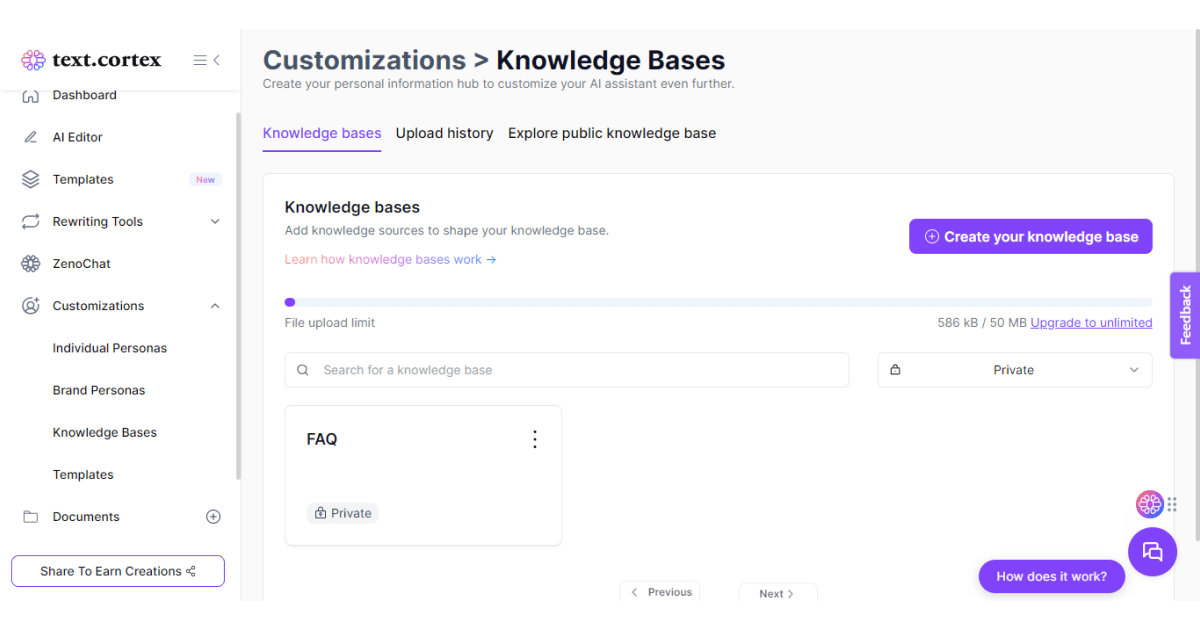
Naturally, you can name your Knowledge Base and keep uploading documents by clicking "Add Sources."
Building your Knowledge Base enables ZenoChat to find relevant info easily and quickly.
2. Customize Your AI Personas
Depending on your business needs, you can create your unique AI persona and personalize it further.
You can either start from scratch or use some of Zeno Chat’s custom personas.
Regardless of what you choose, the process is straightforward:
- Name your persona
- Provide background info about the persona - It will define how the persona acts.
- Choose the area where you want to use it: General, Ads and Marketing, eCommerce, etc.
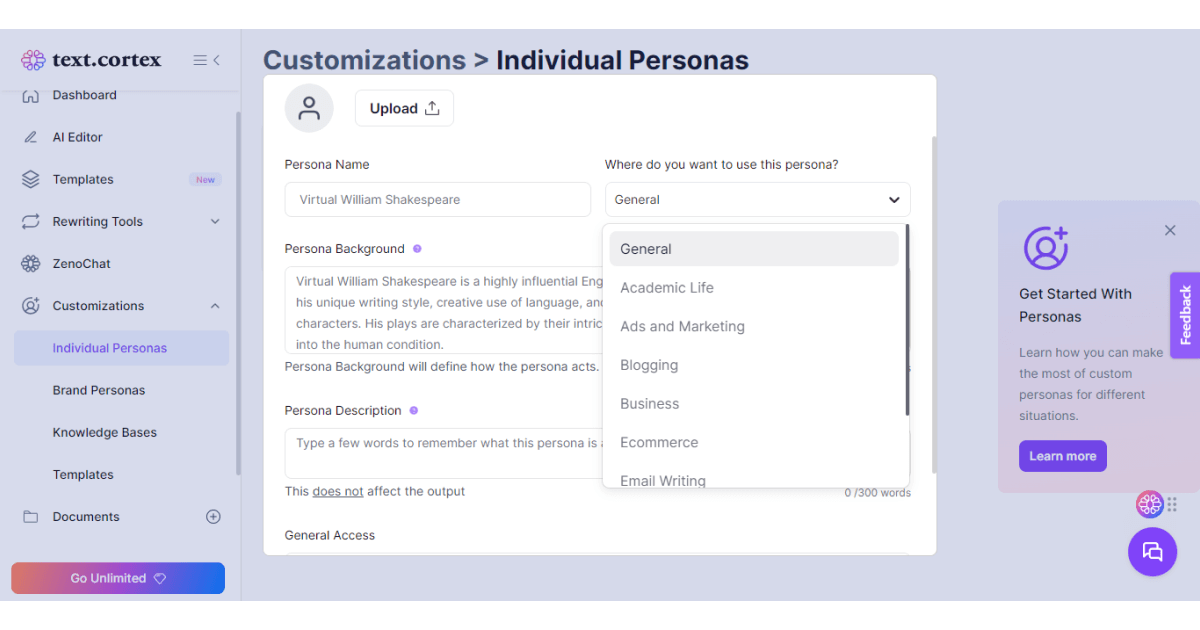
Furthermore, you can insert 3 text samples to provide further context for your persona to help AI imitate the style, the tone, and the general structure of the input.
💡Besides individual personas, you can also create brand personas - your business or brand digital representatives to convey the brand story, visions, and values.
Moreover, thanks to a combination of NLP and machine learning, Zeno Chat can determine the sentiment of a piece of text and understand the attitudes, opinions, and emotions.
But this is not where the story of TextCortex ends.
How Can TextCortex Help You Customize AI Experience?
Besides super powerful Zeno Chat, TextCortex provides:
🎯 Rewriting Toolbar packed with AI-powered writing tools for summarizing, tone-changing, expanding, rewriting, etc.
🎯 Proofreading to iron out grammar and spelling mistakes.
🎯 Multiple languages option to generate content in more than 25 languages.
🎯 Content generation tools to produce all types of content, from product descriptions, ads, and emails to long-form blogs.
🎯 Readability checker to show word count, reading time, character count, and overall text score.
🎯 Bullet-to-email feature to generate emails from as few as 3 bullet points.
🎯 Content brainstorming to help you generate content ideas based on your prompts.
🎯 and so much more.
On top of that, you can use TextCortex on over 4,000 online platforms, on Android and iOS systems, and as an app in your browser.
Ready to dive into the world of chatbots and AI?
Sign up today to create more intuitive, efficient, and human-like interactions in the digital world.

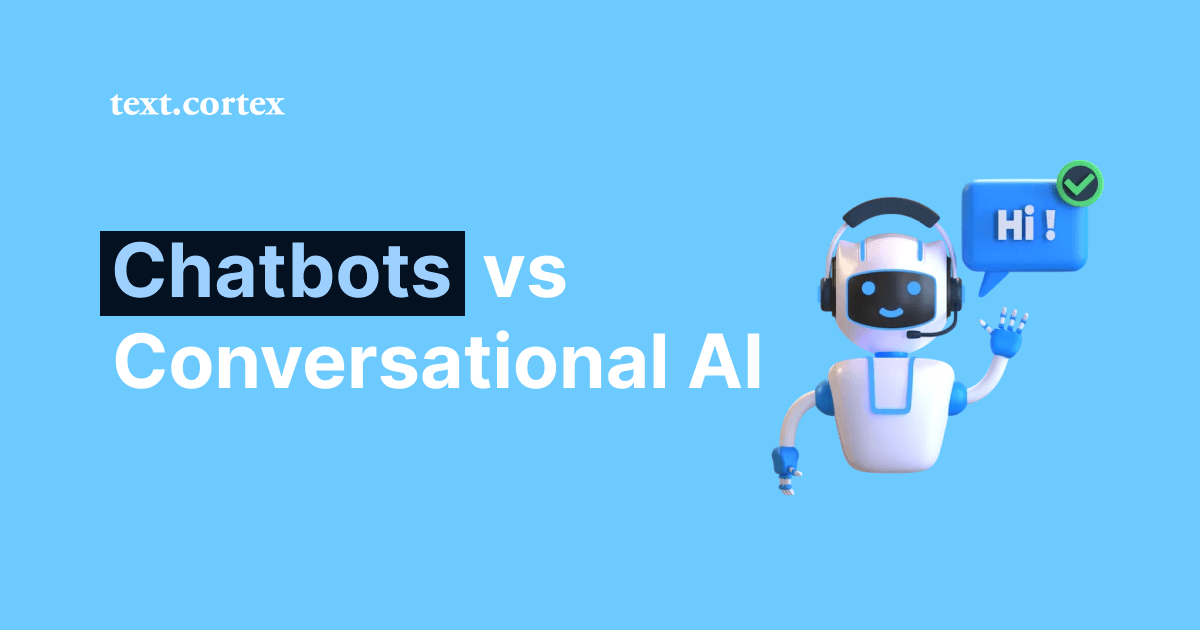
%20(7).png)

